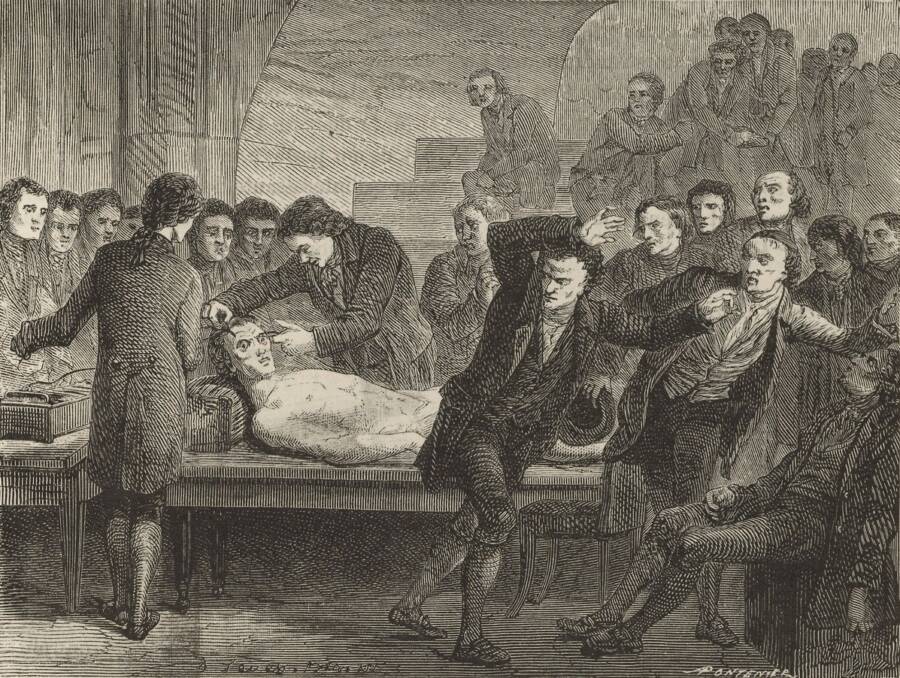In the early 1800s, scientists like Andrew Ure and Giovanni Aldini experimented with using electricity to reanimate dead tissue in disturbing performances straight out of Frankenstein.
In November 1818, a crowd packed into the anatomy theater at the University of Glasgow, the air thick with a grim yet electric sense of anticipation. On the table in the center lay the body of Matthew Clydesdale. A miner — and a murderer — he had been hanged at the gallows just an hour before. He was pale, cold, and most certainly dead.
Standing over him was Dr. Andrew Ure, a Scottish surgeon and chemist. He was a man of science, but that night, he was also a master of theater. In his hands, he held two polished metallic rods, connected by wires to a massive 270-plate voltaic battery.
The crowd hadn’t come for a simple anatomy lesson. They had come for a resurrection.
Ure had a theory. He believed that if he could just stimulate the right nerves — specifically the phrenic nerve — he could restore life. He wasn’t just trying to make a muscle twitch, though, he was trying to restart the engine of the human body.
He made his first incision, applying one rod to the diaphragm and the other to the heel. The effect was immediate. Matthew Clydesdale’s chest seized. It rose and fell in a violent, shuddering, artificial breath. The crowd recoiled. It looked like a man gasping back to life.
But Ure was just getting started. He moved the rods to the dead man’s face. He wanted to animate the very expression of human passion. He applied the charge to the forehead and jaw.

Public DomainAn illustration of Andrew Ure’s experiment on the body of Matthew Clydesdale.
The result was so profoundly shocking, it’s best described by Dr. Ure himself. He wrote:
“Every muscle of the body was immediately agitated with convulsive movements resembling a violent shuddering from cold… every muscle in his countenance was simultaneously thrown into fearful action; rage, horror, despair, anguish, and ghastly smiles, united their hideous expressions in the murderer’s face.”
A dead face, twisted in rage. A corpse shuddering with a “ghastly smile.” This medical spectacle had become a performance of pure horror.
Ure continued, applying the charge to different nerves. The dead man’s arm rose, his finger pointing accusingly at the terrified audience. His legs kicked with such sudden violence that they almost knocked over an assistant.
It was reported that several people in the audience fainted. One man allegedly ran from the theater and died of fright.
That very same year, a 20-year-old woman named Mary Shelley had just published her first novel, anonymously. It was a story about a scientist named Victor Frankenstein who assembled a creature from corpses and, using a “spark,” brought it to life.
Her story is fiction. Gothic horror. But just as Frankenstein was published, Dr. Andrew Ure was proving that the line between fiction and reality was thinner than most could have imagined. The proverbial “mad scientist” wasn’t just a character in a book — he was an educated doctor, performing to a sold-out crowd.
And Ure wasn’t the only one conducting these macabre experiments right out of Frankenstein.
Learn more about the music used in our podcast. History Uncovered is part of the Airwave Media network. Learn more about your ad choices by visiting megaphone.fm/adchoices.






